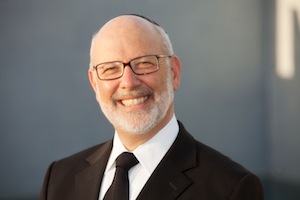Bereishit 22
Halacha: A Multi-Dimensional Reality
Imagine how the world would appear to you if you were able to see it only with two dimensions, and had never ever used three. A cylinder seen from its top would look like a circle, and seen from its side would look like a rectangle. How tumultuous life would be if some of us could only see with two dimensions, and others with three! Imagine how the world would look if we had access to an extra dimension or two? Just as the two-dimensional person looking at the rectangle would be incapable of imagining how you or I saw a cylinder, so we are incapable of imagining how the world would look to a four- or five-dimensional person! So, perceptions of reality are governed not only by what is out there, but equally, by what tools we have at our disposal with which to view reality.
It is conceivable then, that reality is not what we perceive it to be at all. We can simply see that reality that G-d wants us to see using the three-dimensional perspective he gave us.
When we enter the world of Halacha [1] we transition from a three dimensional world into a four, sometimes five and occasionally even a six or seven dimensional world. That is one of the adjustments in perspective needed to master Halacha. Halacha does not merely deal with rules that govern a person’s behavior. Halacha deals with the interface between people and their objective universes, from a multi-dimensional perspective.
Consider some examples: Two pieces of meat, chemically and physically identical, possibly even cut from the same animal. One could be kosher (mutar) and one treif (assur). That difference does not result from a rule governing the subject who wishes to eat the meat. There is in fact a dimensional difference between those two objects that would be totally discernible if we could see the world through the additional dimension of issur ve’hetter. The rule that forbids us to eat the one piece of meat, is the outcome of that objective difference between the two.
Another example: An Etrog on Sucot is valuable precisely because it is an Etrog. One hour, a moment, after Sucot, that same Etrog loses its value precisely because it is no longer and Etrog, it is just another citron. Nothing about the Etrog’s physical properties has changed. The dimension of Time converted a citron into a rare Halachikconcept, an Etrog, and then back again into a citron. In Halacha time is a dimension of an object, and changes its properties. Halachaloses its reputation for dryness when we begin to grapple with its ideas in these ways. Then it delights our souls as it opens its doors to a magical world of mystical intrigue.
We could have a lot of fun exploring these ideas together and I do that in the Daf Yomi Sugiya Shiurim on Masechet Sucot. But at this time let’s look at one fascinating question. In the world of Kodshim(Temple Practice) we work with more dimensions than anywhere else in Halacha. We work not only with the three dimensions of space plus the fourth dimension of time, but also with the dimensions of intention, issur ve’hetter (permitted and forbidden) and Tum’ah ve’Tahara. In laws of sacrifice, all of these dimensions are used. But here’s my question: We sacrifice three-dimensional objects, animals, flour, wine, water. Do we ever sacrifice any of the other dimensions?
Defining the idea of Sacrifice
I would suggest that Shabbat is a sacrifice of Time; and Yom Kippur is a day when we sacrifice our intensions. Sacrifice does not mean that we give it away. Sacrifice means we elevate the sacrifice to the point where ownership of it transfers from us to G-d. Then we benefit from that same sacrifice (in many cases), no longer as owners but as guests of G-d Himself. We give the animal to G-d, and He invites us to partake of it “with” him [2]. On Shabbat we dedicate 25 hours of our time to Him, and then he gives it back to us to be used under specific requirements that keep us in close proximity to Him.
Sucot: Sacrificing Space
What about Sucot? On Sucot we sacrifice Space. Not an object thatoccupies space; we sacrifice the very idea of space itself. We create space, and we give it to G-d. He in turn invites us into His space. How else could we ever get really intimate with G-d, if we had no mechanisms with which to enter His time and His space.
It is for that reason that we are not permitted to use the Sucah or any of the materials out of which it was constructed for our own use, during the entire period of Sucot. We may only use it for the purpose G-d gave us: to dwell with Him in His space. Just as when we eat aKorban (Sacrifice), we are eating it off His table, so when we sit in our Sucot, we are sitting in His space [3].
This idea explains countless complex laws governing the construction and use of a Sucah. But more important it gives us direction (or intention, Kavanah; also one of the dimensions of Halachik reality) as to how to sit in the Sucah, how to conduct ourselves, what kind of sensations and feelings we should access in ourselves. Sitting in G-d’s space! What an idea! What a privilege!!
Notes:
[1] I use the tem Halacha not to describe the system of rules, or practical Dinim, but rather the conceptual world of Halachik reasoning as manifest throughout the Gemarra.
[2] “MiShulchan Gavoha Ka’Zachi”
[3] Learnt, in fact, from Korban Chagigah in Sucah 9b








